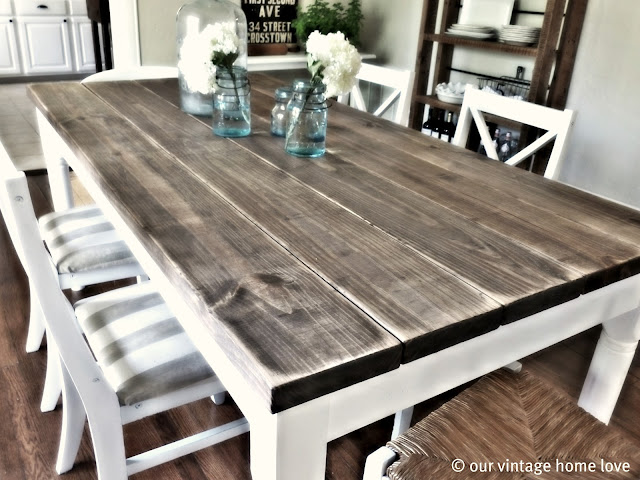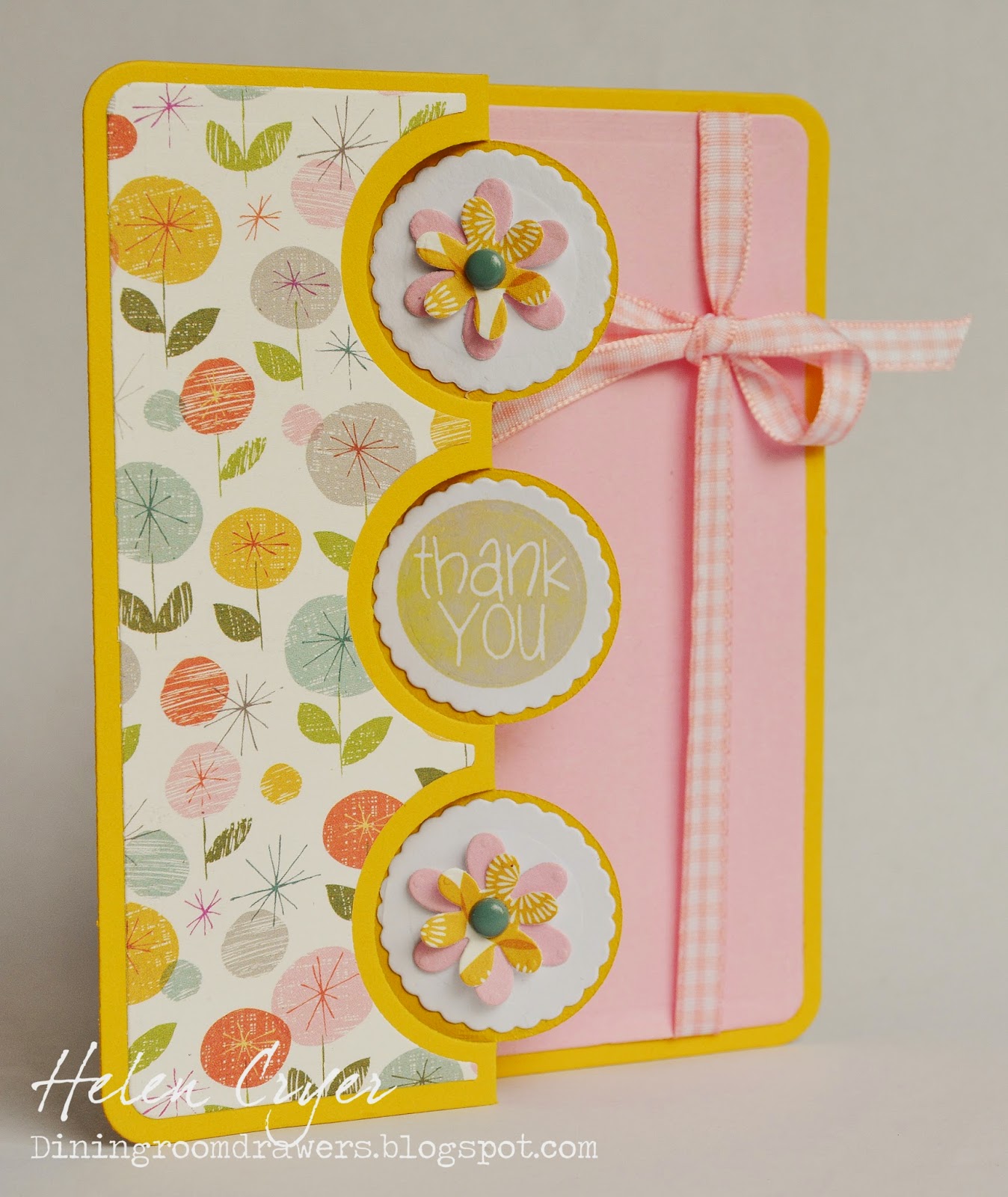Dining Room Table Tutorial
Hey there! I've received a number of emails lately asking how I built my dining room table or how I attached the top to the dining room table I already had. So I decided to do a tutorial for all those who asked. I didn't take any pictures when I did it so I took pictures of the under side of the table, which many of you have asked for, and will do my best to explain each step.
As I mentioned in that post, I used pine 2 x 8's. After I distressed the boards, process discussed here, I laid them together evenly and attached wood brackets to keep them all together.
As mentioned, I already had a dining room table, I just didn't like the top, so I removed it and was left with the base. Now, the previous table was also built by me using the table legs that my dad turned himself before he died. I created the apron (sides) with pine 1 x 5's and attached them to the legs with "L" brackets, as pointed out with arrows. To make them a little more stable, I also drilled long screws at an angle into the legs from the apron. As you can see, it is really important to PRE-DRILL your holes as my wood split.
After the base was complete, I placed it over the under side of the top. To secure it to the top, I cut scrap pieces of oak, which is a little stronger, cut them at 45 degree angles and placed them flush against the apron.
I attached it with screws to the table top.
Next, I pre-drilled holes into the end of the brace into the apron, where the arrow is pointing. Then drilled screws into the holes on both ends. Makes sure your screws are short enough to not go through to the other side of the apron, but long enough to go through the brace and into the apron. I think the screws I used were 1 1/2 inches. To also add stability, I drilled holes and inserted screws from the legs, at an angle into the table top, shown with the bottom arrow in the photo below.
Repeat for each side and that's it. I painted the legs and apron white, which worked out great because if you have any gaps between the table and apron, you can fill them in with caulk. It covers a multitude of sins. :)
Flip it over carefully and you are done. I know there is probably a better way to do this but this is what worked for me, some of it I learned from my dad with another table that he built. He had the right wood joinery tools to do this, I don't, so this is the process that I use.
I hope this is helpful to all those asking me how I did it. It really isn't hard, just a little time consuming and really the only tools you need are a miter saw and cordless drill.
Have a Happy Monday!
Diana
Diana









Comments
Post a Comment